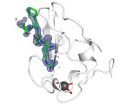(Press-News.org) A new University of Colorado at Boulder study sheds light on the brain mechanisms that allow us to make choices and ultimately could be helpful in improving treatments for the millions of people who suffer from the effects of anxiety disorders.
In the study, CU-Boulder psychology Professor Yuko Munakata and her research colleagues found that "neural inhibition," a process that occurs when one nerve cell suppresses activity in another, is a critical aspect in our ability to make choices.
"The breakthrough here is that this helps us clarify the question of what is happening in the brain when we make choices, like when we choose our words," Munakata said. "Understanding more about how we make choices, how the brain is doing this and what the mechanisms are, could allow scientists to develop new treatments for things such as anxiety disorders."
Researchers have long struggled to determine why people with anxiety can be paralyzed when it comes to decision-making involving many potential options. Munakata believes the reason is that people with anxiety have decreased neural inhibition in their brain, which leads to difficulty making choices.
"A lot of the pieces have been there," she said. "What's new in this work is bringing all of this together to say here's how we can fit all of these pieces of information together in a coherent framework explaining why it's especially hard for people with anxiety to make decisions and why it links to neural inhibitors."
A paper on the findings titled "Neural inhibition enables selection during language processing" appeared in the Aug. 30 Proceedings of the National Academy of Sciences. CU-Boulder professors Tim Curran, Marie Banich and Randall O'Reilly, graduate students Hannah Snyder and Erika Nyhus and undergraduate honors thesis student Natalie Hutchison co-authored the paper.
In the study, they tested the idea that neural inhibition in the brain plays a big role in decision-making by creating a computer model of the brain called a neural network simulation.
"We found that if we increased the amount of inhibition in this simulated brain then our system got much better at making hard choices," said Hannah Snyder, a psychology graduate student who worked with Munakata on the study. "If we decreased inhibition in the brain, then the simulation had much more trouble making choices."
Through their model they looked at the brain mechanisms involved when we choose words. They then tested the model's predictions on people by asking them to think of the first verb that comes to mind when they are presented with a noun.
"We know that making decisions, in this case choosing our words, taps into this left-front region of the brain, called the left ventrolateral prefrontal cortex," Munakata said. "We wanted to figure out what is happening in that part of the brain that lets us make these choices. Our idea here, which we have shown through the word-choosing model, is that there's a fight between neurons in this area of the brain that lets us choose our words."
They then tested the model's predictions that more neural inhibition in the brain makes it easier to make choices by examining the effects of increased and decreased inhibition in people's brains. They increased inhibition by using a drug called midazolam and found that people got much better at making hard choices. It didn't affect other aspects of their thinking, but rather only the area of making choices. They investigated the effects of decreased inhibition by looking at people with anxiety.
"We found that the worse their anxiety was, the worse they were at making decisions, and the activity in their left ventrolateral prefrontal cortex was less typical," Munakata said.
There are two ways in which the research could be helpful in improving treatments for anxiety, according to Snyder. While specific medications that increase neural inhibition are currently used to treat the emotional symptoms of anxiety disorders, the findings suggest that they might also be helpful in treating the difficulty those suffering from anxiety have in selecting one option when there are too many choices.
"Secondly, a more precise understanding of what aspects of cognition patients are struggling with could be extremely valuable in designing effective approaches to therapy for each patient," she said. "For example, if someone with an anxiety disorder has difficulty selecting among multiple options, he or she might benefit from learning how to structure their environment to avoid choice overload."
###
The work was done in CU-Boulder's Center for Determinants of Executive Function and Dysfunction, which brings together researchers from different areas of expertise on campus and beyond including experts on drug studies, neuroimaging and anxiety. The center is funded by the National Institute of Mental Health.
END
WASHINGTON, September 13 – Developing renewable energy sources has never been more important, and solar photovoltaic (PV) technologies show great potential in this field. They convert direct sunlight into electricity with little impact on the environment. This field is constantly advancing, developing technologies that can convert power more efficiently and at a lower cost. To highlight breakthroughs in this area, the editors of Energy Express, a bi-monthly supplement to Optics Express, the open-access journal of the Optical Society (OSA), today published a special Focus ...
AMARILLO - Apply today's chemicals to a sorghum crop for grass control and the sorghum will be killed off also. But a solution could be only a few years away if Texas AgriLife Research plots are any indication.
Dr. Brent Bean, AgriLife Research and Texas AgriLife Extension Service agronomist, has test plots that demonstrate sorghum hybrids tolerant to herbicides typically associated with grass control.
The control is needed not only for annual grass control but also for Johnsongrass, Bean said. Because Johnsongrass is closely related to grain sorghum, herbicides typically ...
Athens, Ga. - A new University of Georgia study has found that select varieties of sorghum bran have greater antioxidant and anti-inflammatory properties than well-known foods such as blueberries and pomegranates.
Researchers measured polyphenolic compounds, which naturally occur in plants to help fight against pests and disease, and found that the black and sumac varieties of sorghum have significant levels of antioxidants. Many fruits also contain these compounds, they said, though sorghum bran may prove to be the richest and cheapest source.
"Since most human chronic ...
David H. Adams, MD, Marie-Josée and Henry R. Kravis Professor and Chairman of the Department of Cardiothoracic Surgery at The Mount Sinai Medical Center, has performed the first implantation of the Medtronic Tri-Ad Semi-Flexible Tricuspid Annuloplasty Ring in the United States. Dr. Adams invented the ring, which was recently approved by the Food and Drug Administration.
The tricuspid valve lies between the right atrium and right ventricle of the heart. Tricuspid valve regurgitation occurs when the valve does not close completely and blood leaks back into the right atrium ...
A group of children who underwent fusion surgery for spondylolisthesis in the lumbar spine 30 years ago showed a clear reduction in back pain when followed up seven years later. A new study of these patients as adults has found that the benefits have lasted, reveals research from the Sahlgrenska Academy and Sahlgrenska University Hospital presented this week at the International Society of Orthopaedic Surgery and Traumatology (SICOT) annual international conference in Gothenburg.
Spondylolisthesis (forward displacement of a vertebra) in the lumbar spine occurs in 6% ...
Today sees the presentation of a study that, for the first time, shows the results of treatment using prostheses attached to titanium implants in the bones of patients with above-the-knee amputations. It reveals that the treatment improves function and quality of life in nine out of ten patients, and is the result of research carried out at the Sahlgrenska Academy and Sahlgrenska University Hospital that is being presented this week at the International Society of Orthopaedic Surgery and Traumatology (SICOT) annual international conference in Gothenburg.
At a symposium ...
Early childhood education can play a key role in relation to change when the world fails to adopt a sustainable approach economically, ecologically and socially.
This was highlighted at the World Congress "Children, citizens in a challenged world", which was hosted by the University of Gothenburg.
In a statement, the congress urges governments around the world to protect children's right to a childhood.
More and more people are realising that work with young children is a force for change in itself, towards creating a different society. Early childhood education has ...
Sexual conflict is not only a human phenomenon. Scientists at the University of Gothenburg have shown that females of the rough periwinkle conceal their gender identity in order to avoid excessive copulation.
The females of most species of snail excrete a substance in their mucous trails that enables males to find them more easily, since they can distinguish between trails from females and those from other males. The males follow the mucous trails laid down by females in order to find a partner for mating. However, the females of one of the species studied (Littorina ...
VIDEO:
This video shows UBR-box recognition of an arginine residue at the beginning of a protein (blue) targeted for degradation. The structural integrity of the UBR box depends on zinc (grey)...
Click here for more information.
Our bodies recycle proteins, the fundamental building blocks that enable cell growth and development. Proteins are made up of a chain of amino acids, and scientists have known since the 1980s that first one in the chain determines the lifetime ...
The new Premier League season has begun and in Madrid the World Cup celebrations are barely over, yet according to research in WIREs Cognitive Science the world's best players may soon be facing a new challenge from football playing robots, which their creators claim will be able to play and beat a human team. The research reveals how building robots to play football is driving the development of artificial intelligence and robotic technology which can be used for roles including search and rescue and home help.
The author, Claude Sammut, from the ARC Centre of Excellence ...



